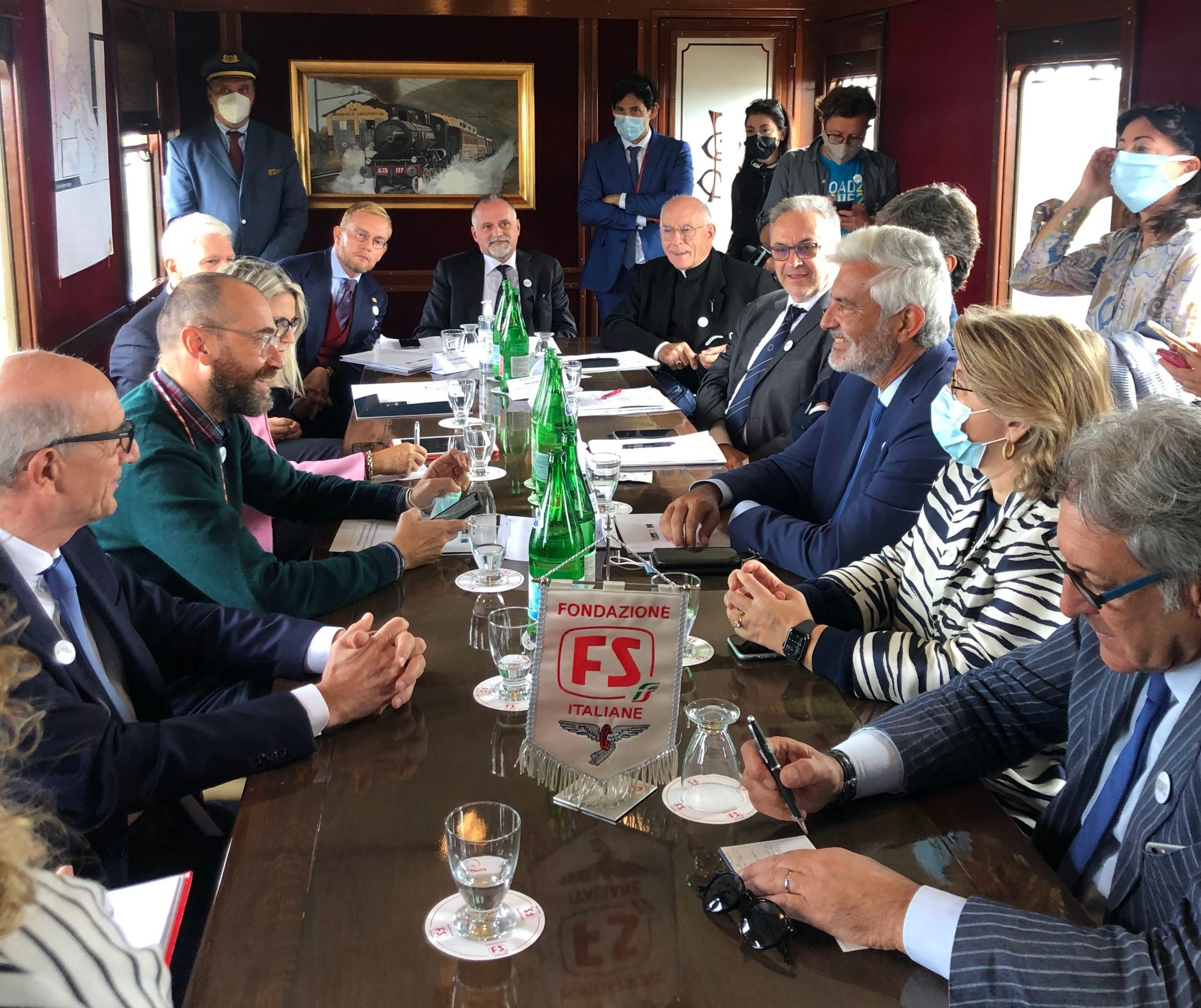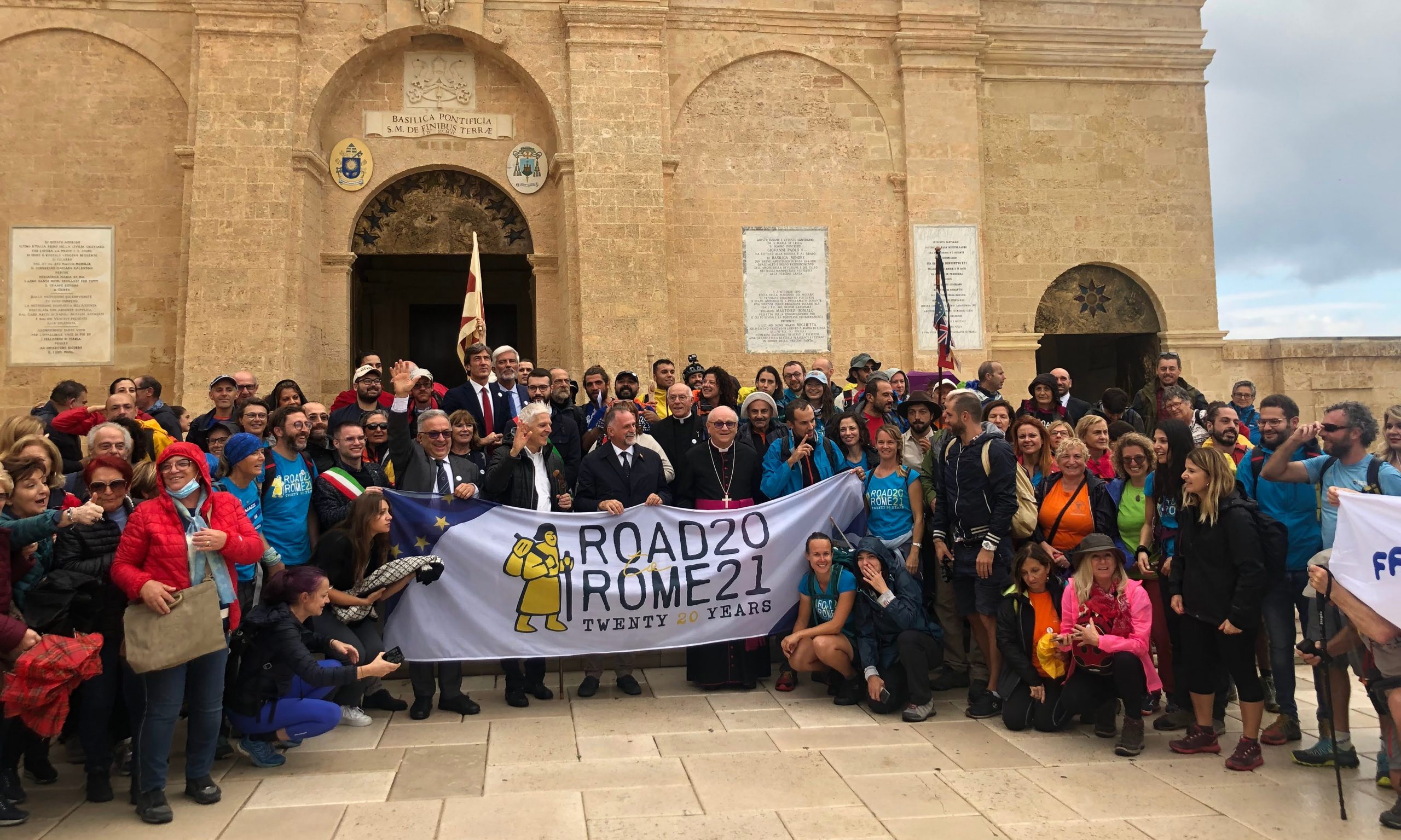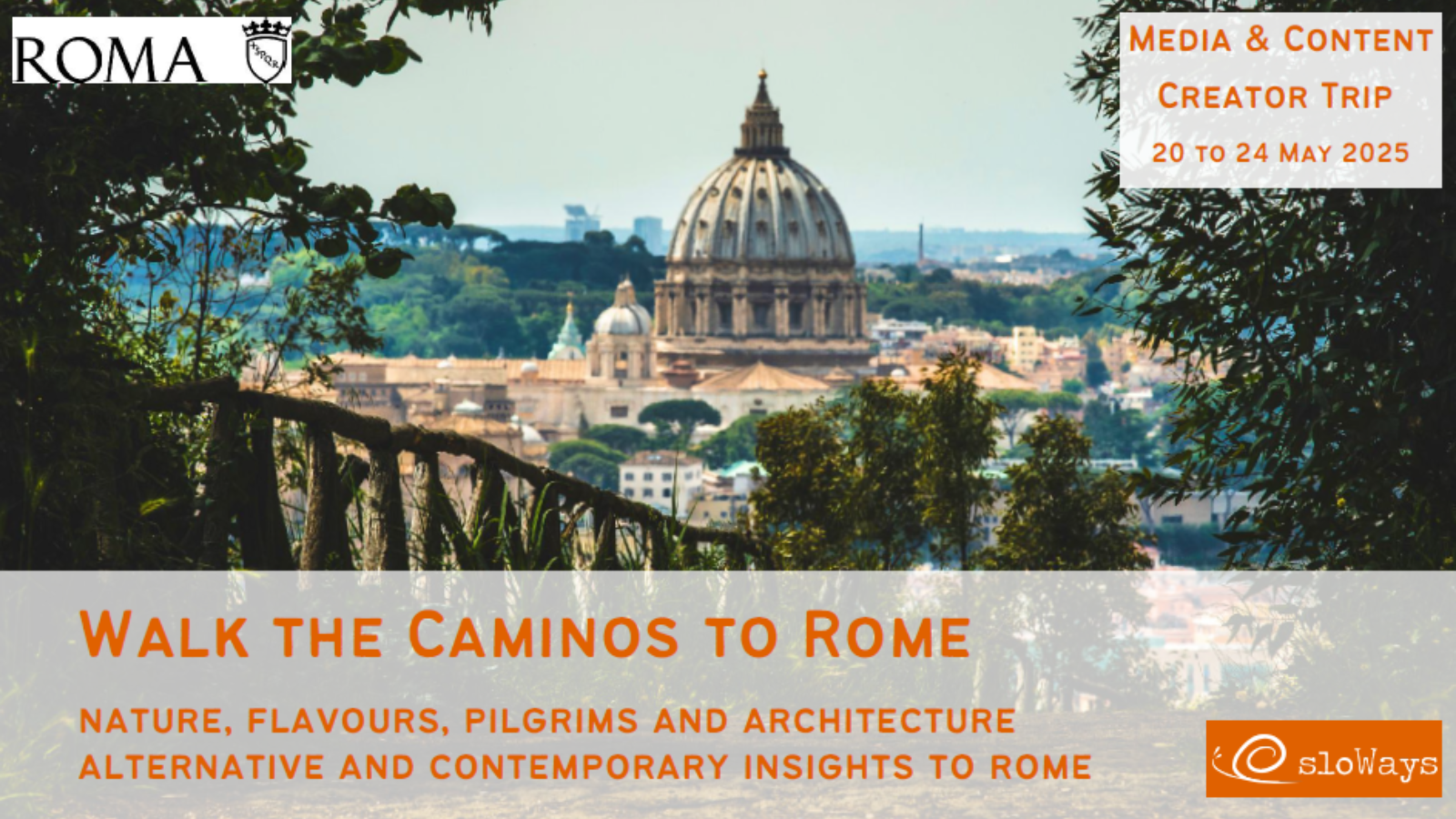Exactly one week ago, on the 18th of October 2021, the “Road to Rome 2021” relay march came to an end after 127 days by foot along the Via Francigena. An epic adventure that brought together the association’s staff, social media manager Myra Stals, many bloggers, video makers, photographers and walkers, as well as institutional representatives, all on the road to join the group, for one or more stages, from Canterbury and from Calais to Santa Maria di Leuca. Rain, mud, clearing skies and tropical mugginess on the one hand, encounters, confrontation, photos and videos, interviews, local entertainment on the other: these elements filled our 3,200 km journey by foot and by bike with incredible moments.
This long march was not a stroll with our friends, but an important opportunity for the entire tourism sector: it allowed us to build a strong network among stakeholders and to launch new agreements and collaborations with public and private entities that operate in the realm of pilgrimages and slow tourism, while strengthening pre-existing relationships. These achievements were often reported by Massimo Tedeschi, President of the European Association of Via Francigena ways, during the many institutional meetings that took place across all regions crossed by the route. One particularly special occasion was the press conference aboard a historical train, restored by the FS Italiane Foundation, with which local, regional and national authorities traveled during the last stage of the event, on the 18th of October, from Otranto to Gagliano del Capo. In a conference carriage, participants spoke about “a slow tourism that travels quickly”. Massimo Garavaglia, Italian Minister for Tourism, highlighted the potential and the opportunities that must be seized from walking itineraries: “The Via Francigena is the perfect project at the perfect time, considering the current rediscovery of outdoor activity as a response to the pandemic: the nature-heritage binomial represents a powerful means for the relaunch of the entire tourism sector, and it is capable of generating new connections and job positions”.

The Minister was joined by Massimo Bray, Commissioner for Tourism for Regione Puglia, who highlighted the role of hospitality as a core value for tourism; the Via Francigena takes special care of hospitality and aims to a certain quality standard: it can therefore be considered a model. Massimo Tedeschi agreed, underlining the fact that the Cultural Route of the Via Francigena can provide enormous opportunities for inner development thanks to intercultural dialogue and exchange of ideas between people coming from very various cultures: “Road to Rome taught me to break down stereotypes: certainly we have different cultures, but this should not create prejudice among regions nor states; the true value resides in single people within a united Europe: together we take a new path. At the end of “Road to Rome 2021” we are able to say that this experience contributed to put in practice the three keywords we had set for this initiative: relaunch; heritage (both material and immaterial); Europe”.
Monsignor Liberio Andreatta, who took part in the conference as Deputy Chairman of the FS Italiane Foundation, discussed the importance of the inner spiritual experience this journey allows. Not only we encounter other people on the route, but especially ourselves: a pilgrimage is undertaken with no rush, and does not aim to reach the destination as soon as possible but to enjoy the journey.
“Historical transportation can represent a connector for this new form of slow tourism” added Luigi Cantamessa, General Manager of the FS Italiane Foundation. Moreover, Stefano Mantella, Director of Real Estate Strategies and Innovation for Agenzia del Demanio and coordinator of the Valore Paese Italia project, argued that the Via Francigena is a tangible witness of Italy’s investment in sustainable tourism: “now we must work on the interconnection between journeys by foot – bike – historical train to provide a smooth mobility; a real challenge, next to the challenge of accessibility”. Giorgio Palmucci, President of ENIT, reconfirmed the commitment of the Italian National Tourist Board in developing the sector of slow tourism, arguing that it can provide great value to all heritage embedded in landscapes, arts, food and wine, etc., in locations that are off the beaten tourism tracks.

The conference assembly was welcomed by pilgrims upon arrival of the train, and then continued with the group of walkers for the final 7 kilometers: upon arrival, authorities, journalists and citizens cheered for the entrance of 150 people in the churchyard of the Sanctuary of Santa Maria di Leuca de Finibus Terrae. Overwhelmed by emotions, the group celebrated with a big hug the conclusion of an unforgettable quest.
After a brief moment of contemplation and silence in the Sanctuary, where Bishop Vito Angiuli greeted and welcomed pilgrims, a final conference, open to the public, dispatched a first reportage of this adventure.









